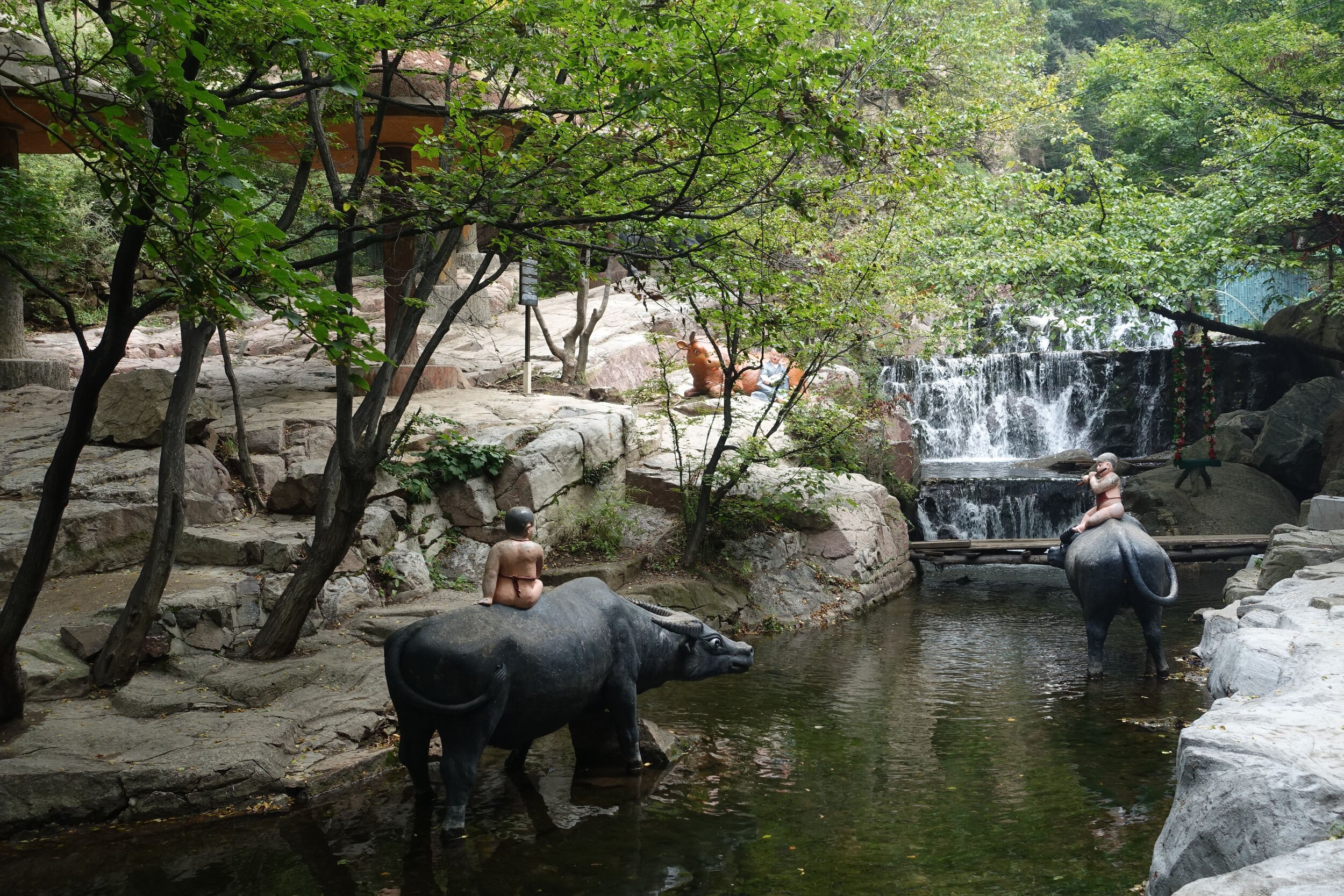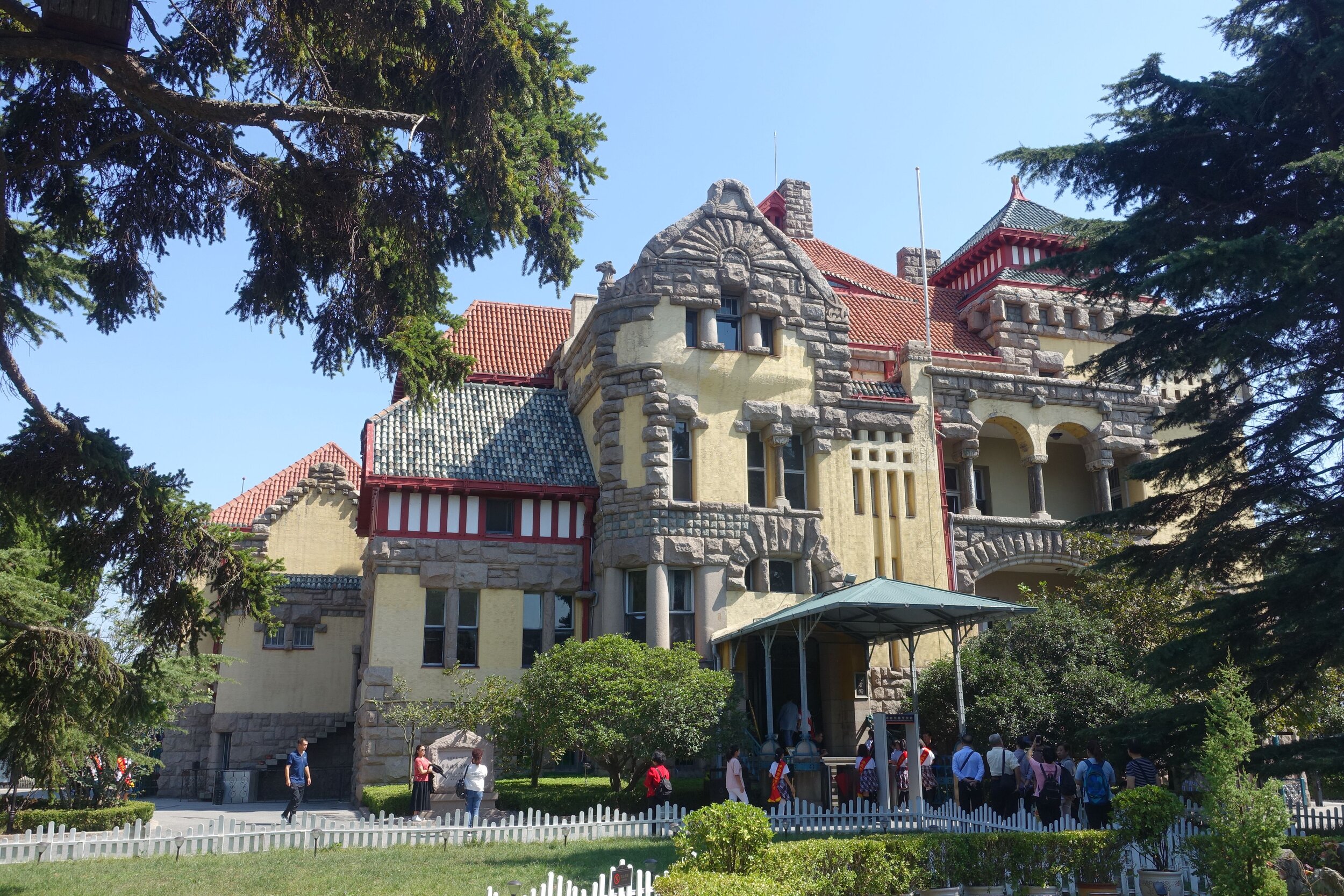Three Lesser Known Chinese Cities Worth a Visit
/Introduction
Most first time Western tourists to China will follow a well-trodden path – to Beijing for the Great Wall of China and the Forbidden City, Xian for the Terracotta Warriors, the Bund in Shanghai, a Yangxi River cruise, and a visit to the karst mountain region in the south around Yangshao. There’s nothing wrong with this itinerary. All of these are impressive and well worth the effort to see, but there is a lot more to China than just these big ticket attractions.
the bund
On a month’s visit to China in September 2019 we ticked off most of these, but we also took the time to go to some lesser known cities and were rewarded for the effort.
forbidden city
Here are three that we think you might want to add to your China program.
Datong
Datong is a city of 3.3 million 350 kms to the west of Beijing. 1n 2010 the city began a massive project to reconstruct the city’s 14th century Ming Dynasty walls along with many of its historic buildings. The result today is that Datong has created a new “old town”, with palaces, Buddhist temples and the ancient defensive walls. While it feels a bit like being in a Chinese historic Disneyland it is clearly an admirable and impressive achievement.
Datong’s reconstructed historic old town
One of the few original ancient icons is the Nine Dragon Screen. This is a 45m long 8m high Ming Dynasty spirit wall consisting of nine colourful coiled dragons. It was made of glazed tiles in 1392.
nine dragon screen
Our Datong visit coincided with celebrations which were part of the 70th anniversary of Communist Party rule in China, that was occurring right across the country at the time. This included colourful mass tai chi demonstrations.
mass tai chi
While we enjoyed the new “old city” the real attraction in Datong is the Yungang Caves. These are China’s oldest and most amazing example of Buddhist cave carvings. The statues and other art works in 252 caves were produced by the Turkic speaking Tuoba people in the 5th century over a 60 year period starting in AD 460.
Upon entering the site, you travel along paths before reaching a temple complex over a lake.
Beyond the complex are the caves.
They really are quite stunning.
And some are massive.
One marvels at how they were made and the devotion of those who made them.
and who doesn’t love a warm prompt
There is also a museum on site.
on site museum
As well as the Yungang Caves and Datong Old Town the city is the gateway to the Hanging Monastery, the world’s oldest wooden pagoda, and Watai Shan sacred mountain.
Pingyao
The city of Pingyao in Shanxi Province, small by Chinese standards at half a million, is known as China’s best preserved ancient walled town. The walls date back to 1370.
So many of China’s cities have “modernised” obliterating much of the past’s built heritage. In places like Datong the city leaders have gone about recreating the splendour of previous eras, recognising that it was a mistake to have removed so much of their historic past. In the case of Pingyao we wanted to see a more authentic, original example of an older China. This was our main motivation for visiting.
We weren’t disappointed. The old town is still a place where people live and have done so for generations. The walls around the old town and it’s 30,000 residents stretch for six kilometres.
We walked the full length. In a couple of spots restoration work that was being undertaken meant that we needed to return to street level briefly before reascending the walls at a point a little further on.
The wall walk presented lots of great views into the town.
looking down from the walls
As you wander the streets you come across many historic buildings. These are all visitable with a single ‘town visit’ ticket. Many relate to Pingyao’s past as a busy merchant town where the country’s first banks were established.
inside the grounds of one of the many historic buildings
They have names like “Chinese Armed Escort Agency Museum” and “Rishengchang Financial House Museum”.
no, he’s not real
There is no doubt that parts of the old town have been gentrified and commercialised to cash in on the large numbers of domestic tourists. Tourist shops, restaurants and guesthouses rub shoulders with the historic buildings, temples and museums. And while for some people, that may make it less “real” we enjoyed walking the streets and taking it all in.
For our month in China one hotel in particular was a standout – Cheng Jia Hotel in Pingyao. This was courtyard hotel made from a converted family home dating back 250 years. We loved it. Click here if you want more information.
cheng jia hotel
An interesting, but slightly bizarre, day trip from Pingyao is to the sacred mountain of Mian Shan. We didn’t know what to expect but we’d read that there were a number of temples and other attractions perched precariously on the side of a mountain overlooking a huge gorge. It sounded intriguing so we decided to investigate.
After arriving at the humongous entrance, we made our way to the bus pick up where buses regularly take tourists on a 20 minute climb up the mountain on a serpentine road to the start of the visitors’ area. From there you board other buses that make the run along a road clinging to the side of the mountain for several kilometres.
mian shan entrance
You can get on and off at various stops along the road. We took some time to check out the Yungfeng Temple.
yungfeng Temple
It sits under an enormous rock overhang high up on Mian Shan.
We walked the road for a bit and checked out a couple of other sights.
the road along the side of the mountain
At the terminus of the road linking the places of interest there is a walk of several kilometres on paths beside a stream with many small waterfalls.
The attitude of locals seems to be that every waterfall can be improved by adding a tasteful (or not so tasteful) statue or three.
spot the cow’s head?
Our personal favourites were:
At the end of the visit you return via the same route to the base of the mountain and the visitors’ centre.
In our view Mian Shan is a combination of spectacular views, death defying roadworks, fascinating history, and uber-kitsch. A heady mix indeed. But we were pleased we went.
The region around Pingyao has other attractions including Zhangbi Underground Castle and the Wang Family Courtyard.
Qingdao
Our third and final lesser known Chinese City is Qingdao (pronounced Ching Dow). Qingdao’s main claim to fame, at least in the west, is that it is the home to Tsingtao beer, China’s best known beer.
That fact alone wasn’t enough to temp us to include it on our China itinerary, but a work colleague of Cally’s, who had been there some years ago, told her about the city’s German heritage, yes, German, and it’s associated unusual Germanic architecture.
Beer? Germans? There’s obviously something going on here. Our interest piqued we added it to our program. The reality turned out to justify our preparedness to visit.
Qingdao train station
Qingdao is a coastal city which had a Ming Dynasty Defensive Battery and was an important Chinese port when in 1897 the Germans turned up and seized it, setting it up as their concession on a 99 year lease, “negotiated” via the same gunboat diplomacy used by other European powers of the age (eg the British in Hong Kong, and French and Americans in Shanghai).
coastal walk from the city to bathing beach #1
While the German stranglehold on Qingdao was relatively brief, lasting only until the beginning of the First World War, when the Japanese took control, they managed to set up a brewery and make their mark on the city architecturally. And today both of these are still very much in evidence in modern Qingdao.
Qingdao - number 6 bathing beach and cityscape
The city’s distinctive white stone and red roofed architecture is everywhere. No where is it more apparent than in the muscular ex German Governor’s House which is now a museum.
ex german governor’s house
It sits high up on the side of Signal Hill with a commanding view of the city where it sends a very clear message of “who’s boss” (well at least they were for a while).
We climbed to the top of Signal Hill for further views of the city and its characteristic architectural style.
Qingdao also has many beaches, with such imaginative names as Bathing Beach Number One, Bathing Beach Number Two, etc, you get the idea. It was late summer, and the weather was hot, so we took the opportunity to have a dip in the Yellow Sea at the broad expanse of Bathing Beach #1. It was a pleasant break from the heat and a chance to observe Chinese beach culture close up.
number one bathing beach
One curious observation was that no one brings towels. They just lie on the sand and get all sandy or stand up the whole time. There’s definitely a commercial opportunity there if you can convince the locals of the benefits of having a beach towel.
spot the beach towels - that’s right, there aren’t any
A little unnerving was the phenomena of female bathers who wear ski masks or even full lycra body suits to the beach to avoid sun damaging their skin. They emerge from the water looking not unlike the creature from the black lagoon (google it if you’re too young to know what we’re talking about). If you’re not expecting this sight it can take you a little by surprise.
A short stroll along the promenade alongside the very central Bathing Beach #6 takes you to the small Huilan Pavilion at the end of a pier. This is the pavilion on the front of the Tsingtao beer label, so it is much loved, and much visited.
huilan pavilion
And much photographed.
Close by, across the bay, is an odd building shaped like a durian. Not sure exactly what its purpose is.
durian shaped building
We also saw a lot of couples taking what we assumed were pre-wedding photos at various locations across the city. This included a couple being photographed having a pretend beach picnic posing with plastic fruit.
By far the most popular location was in front of the imposing St Michael’s Cathedral.
We counted over a dozen couples in full wedding regalia being photographed at one time.
The crowning glory of our trip to Qingdao was the not-to-be-missed visit to the Tsingdao Beer Museum. Yes, it’s not just a brewery, it’s a museum!
We went with low expectations, and were pleasantly surprised by the efforts made by the museum to educate visitors to all things beer-related, which included barley tastings, holograms of 19th century German beer makers, as well as the obligatory ye olde brewing paraphernalia.
But in the end the tasting was the best bit, in the very swish tasting area.
Being coastal Qingdao enjoys some pleasant sea breezes that not only cool the city, but they also blow away (for a while) some of the ever-present thick smog pollution that hangs over virtually all of Eastern China.
Qingdao
We really enjoyed Qingdao and felt rewarded for having made the effort to visit.
Conclusion
China is a huge country with a lot to see. You could easily spend months there and only scratch the surface. But most foreign tourists are likely to only go for the length of a standard Chinese visitor’s visa, which is 30 days, or possibly even shorter if on an organised tour. If you have the full month that’s plenty of time to see the drawcard attractions such as the Terracotta Warriors and the Great Wall, still leaving plenty of room to fit in a few more places.
We think that the three cities described briefly here are all good value and add some variety to any visit.
statues on pingyao walls
Ken and Cally
section of roof from historic building in pingyao































